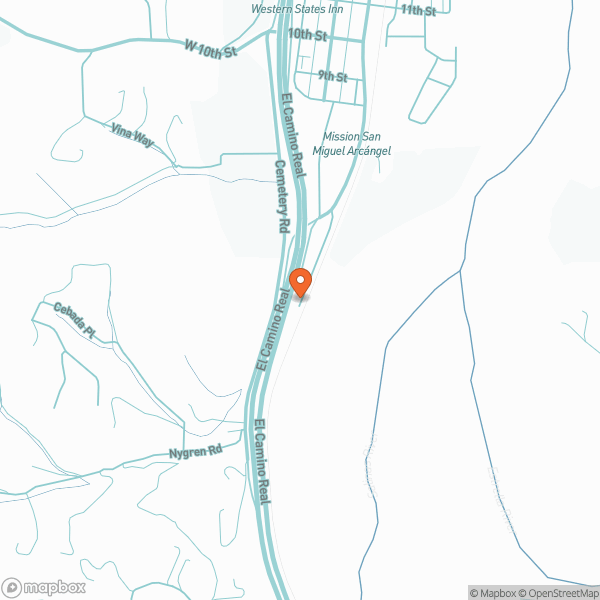Rios-Caledonia Adobe
The century-old inn and stage stop is located on the old mission trail between San Francisco and Los Angeles and is found eight miles north of Paso Robles and adjacent to the San Miguel Mission. Preserved buildings, beautifully landscaped grounds, picnic sites, a gift shop and restrooms are found at the site.
To visit Rios-Caledonia Adobe, take the San Miguel off ramp exit from Highway 101.
The Adobe is open Friday—Sunday from 11 a.m. until 4 p.m.
The Rios-Caledonia Adobe has an interesting and unique history. Built in 1835 by local Indians, it was initially part of the properties of Mission San Miguel de Archangel. Petronilo Rios supervised the construction of the two-story adobe covered with white plaster made from lime, river sand and animal hair. At the time, he was a corporal who commanded the artillery detachment of eight men from the San Francisco Military District to guard the mission and commander of artillery at the presidio in Monterey. The timbers for the fourteen-foot rafters were sawn from trees transported to the site from Cambria and tied together by leather straps.
In 1846 William Reed, Miguel Garcia, and Rios bought the San Miguel rancho from Pio Pico, Governor of the Mexican Nation. It was an interesting transaction because the purchase was several days before California became part of the United States. Rios and his wife, Catarina Avila, had twelve children and moved into the adobe in 1851. In 1862 German-born Warren C. Rickard purchased the property from the state of California on a possession claim.
In 1868 George Butchard named the adobe the Caledonia, a Scottish word meaning Scotland. He operated a stagecoach stop, tavern, and inn. According to local legend, Jesse James, the Dalton Brothers, and Tiburcio Vasquez visited the inn. Morgan, Brians, and Sons, along with Jude Jeffries were the next occupants. In 1886, following the arrival of the Southern Pacific Railroad service to San Miguel, the Rios-Caledonia Adobe was utilized as a residence, school, post office, mattress making/upholstery shop, and a dressmaking/tailor shop.
In 1895 the Fred Telford family lived in the adobe and operated a dairy farm on the property. In 1903 Alfred Nygren, his wife and two children were in residence until the adobe and six acres sold to real estate broker and Spanish-American War veteran Charles Dorries. He developed plans to restore the building and open it to the public. He built walls and added a garden court with cacti and shrubs. In 1915 the original stagecoach road became Highway 101. In 1964 the San Luis Obispo County Board of Supervisors purchased the adobe. The Rios-Caledonia Adobe is now California Historical Landmark No. 936 and a San Luis Obispo County Park.
In 1968 the Friends of the Adobes, Inc. was formed to promote the restoration and maintenance of the adobe as well as the Estrella Adobe Church (see related page). The group spent ten years of planning, raising funds and obtaining historical furnishings.
The building was formally dedicated in December 1972 after major construction was completed. In June 1978, the adobe, museum and gift shop were opened. The work continues, following as faithfully as possible the design and appearance of the original structure.
The restoration of the Rios-Caledonia Adobe has been a continuing cooperative effort between the Friends of the Adobes, Inc. and the County of San Luis Obispo working though the Parks and Recreation Department.


